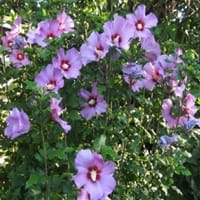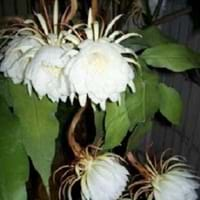Life Span
Perennial
Perennial
Type
Shrub
Cactus or Succulent, Flowering Plants
Types
Not available
Not Available
Number of Varieties
Not Available
Habitat
subtropical regions, Temperate Regions, Tropical regions, Warmer regions
Tropical rainforest
USDA Hardiness Zone
9-11
9-11
Sunset Zone
H1, H2, 13, 14, 15, 16, 17, 20, 21, 22, 23, 24
H1, 21, 22, 23, 24
Habit
Upright/Erect
Weeping
Minimum Width
Not Available
Flower Color
Blue, Purple, Blue Violet
Red, Orange, Magenta, Orange Red
Flower Color Modifier
Not Available
Not Available
Fruit Color
Not Available
Purple, Red
Leaf Color in Spring
Dark Green
Not Available
Leaf Color in Summer
Dark Green
Not Available
Leaf Color in Fall
Dark Green
Not Available
Leaf Color in Winter
Dark Green
Not Available
Leaf Shape
Irregular
Long linear and narrow
Plant Season
Spring, Summer, Fall, Winter
Spring, Summer, Fall, Winter
Sunlight
Full Sun
Partial Sun, Partial shade
Growth Rate
Medium
Medium
Type of Soil
Clay, Loam, Sand
Loam, Sand
The pH of Soil
Acidic, Neutral, Alkaline
Neutral
Soil Drainage
Well drained
Well drained
Bloom Time
Indeterminate
Spring, Late Spring, Early Summer, Summer
Tolerances
Not Available
Not Available
Where to Plant?
Ground, Pot
Ground, Pot
How to Plant?
Seedlings, Semi-hardwood cuttings
From Rhizomes, Leaf Cutting, Stem Planting
Plant Maintenance
Medium
Medium
Watering Requirements
Average Water Needs, Do Not over Water, Requires regular watering
Keep the ground moist but not water-logged, Water occasionally
In Summer
Lots of watering
Lots of watering
In Spring
Moderate
Moderate
In Winter
Average Water
Average Water
Soil pH
Acidic, Neutral, Alkaline
Neutral
Soil Type
Clay, Loam, Sand
Loam, Sand
Soil Drainage Capacity
Well drained
Well drained
Sun Exposure
Full Sun
Partial Sun, Partial shade
Pruning
Remove damaged leaves, Remove dead branches, Remove dead leaves
Remove damaged leaves, Remove dead branches, Remove dead leaves
Fertilizers
All-Purpose Liquid Fertilizer
All-Purpose Liquid Fertilizer
Pests and Diseases
Red blotch, Rust aphids
Red blotch
Plant Tolerance
Not Available
Drought
Flower Petal Number
Single
Single
Foliage Texture
Medium
Bold
Foliage Sheen
Matte
Not Available
Attracts
Butterflies, Flying insects, Hummingbirds, Insects
Hummingbirds
Allergy
Not Available
no allergic reactions
Aesthetic Uses
Borders, Showy Purposes, small hedge
Beautification, Showy Purposes
Beauty Benefits
Not Available
Not Available
Environmental Uses
Air purification
Air purification
Medicinal Uses
High blood pressure, lowering blood pressure
Not Available
Part of Plant Used
Flowers, Leaves
Whole plant
Other Uses
Decoration Purposes
Showy Purposes, Used as Ornamental plant
Used As Indoor Plant
Yes
Yes
Used As Outdoor Plant
Yes
Yes
Garden Design
Container, Feature Plant, Hedges, Mixed Border, Rock Garden, Wall
Container, Hanging Basket, Houseplant, Rock Garden, Wall, Tropical
Botanical Name
ALYOGYNE huegelii 'Monle'
DISOCACTUS ackermannii
Common Name
Blue Hibiscus, Purple Delight Blue Hibiscus
Orchid Cactus
In Hindi
Blue Hibiscus
आर्किड कैक्टस
In German
Blauer Hibiskus Baum
Orchid cactus
In French
Bleu Hibiscus Arbre
Cactus Orchid
In Spanish
Azul árbol del hibisco
cactus orquídea
In Greek
Μπλε Hibiscus Tree
ορχιδέα κάκτος
In Portuguese
Árvore azul do hibiscus
Orchid cactus
In Polish
Niebieski Hibiscus Drzewo
Orchid kaktus
In Latin
Hibiscus lignum blue
Orchid cactus
Phylum
Magnoliophyta
Embryophyta
Class
Magnoliopsida
Magnoliopsida
Order
Malvales
Caryophyllales
Family
Malvaceae
Cactaceae
Genus
Alyogyne
Disocactus
Clade
Angiosperms, Eudicots, Rosids
Angiosperms, Core eudicots, Eudicots
Tribe
Hibisceae
Hylocereeae
Subfamily
Malvoideae
Cactoideae
Number of Species
Not Available
Not Available
Season and Care of Blue Hibiscus and Orchid Cactus
Season and care of Blue Hibiscus and Orchid Cactus is important to know. While considering everything about Blue Hibiscus and Orchid Cactus Care, growing season is an essential factor. Blue Hibiscus season is Spring, Summer, Fall and Winter and Orchid Cactus season is Spring, Summer, Fall and Winter. The type of soil for Blue Hibiscus is Clay, Loam, Sand and for Orchid Cactus is Loam, Sand while the PH of soil for Blue Hibiscus is Acidic, Neutral, Alkaline and for Orchid Cactus is Neutral.
Blue Hibiscus and Orchid Cactus Physical Information
Blue Hibiscus and Orchid Cactus physical information is very important for comparison. Blue Hibiscus height is 120.00 cm and width 120.00 cm whereas Orchid Cactus height is 15.20 cm and width Not Available. The color specification of Blue Hibiscus and Orchid Cactus are as follows:
Blue Hibiscus flower color: Blue, Purple and Blue Violet
Blue Hibiscus leaf color: Dark Green
Orchid Cactus flower color: Red, Orange, Magenta and Orange Red
- Orchid Cactus leaf color: Not Available
Care of Blue Hibiscus and Orchid Cactus
Care of Blue Hibiscus and Orchid Cactus include pruning, fertilizers, watering etc. Blue Hibiscus pruning is done Remove damaged leaves, Remove dead branches and Remove dead leaves and Orchid Cactus pruning is done Remove damaged leaves, Remove dead branches and Remove dead leaves. In summer Blue Hibiscus needs Lots of watering and in winter, it needs Average Water. Whereas, in summer Orchid Cactus needs Lots of watering and in winter, it needs Average Water.





